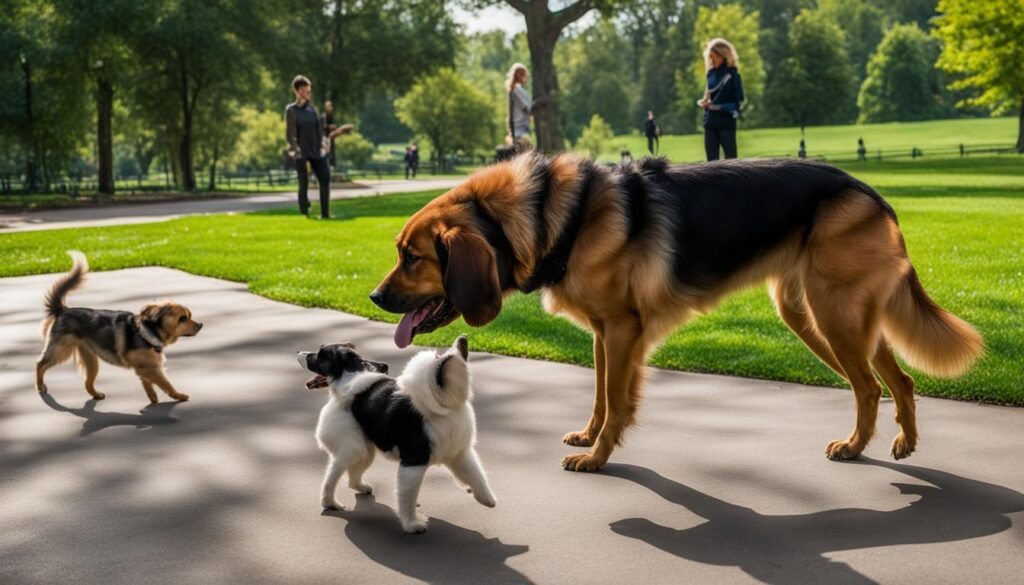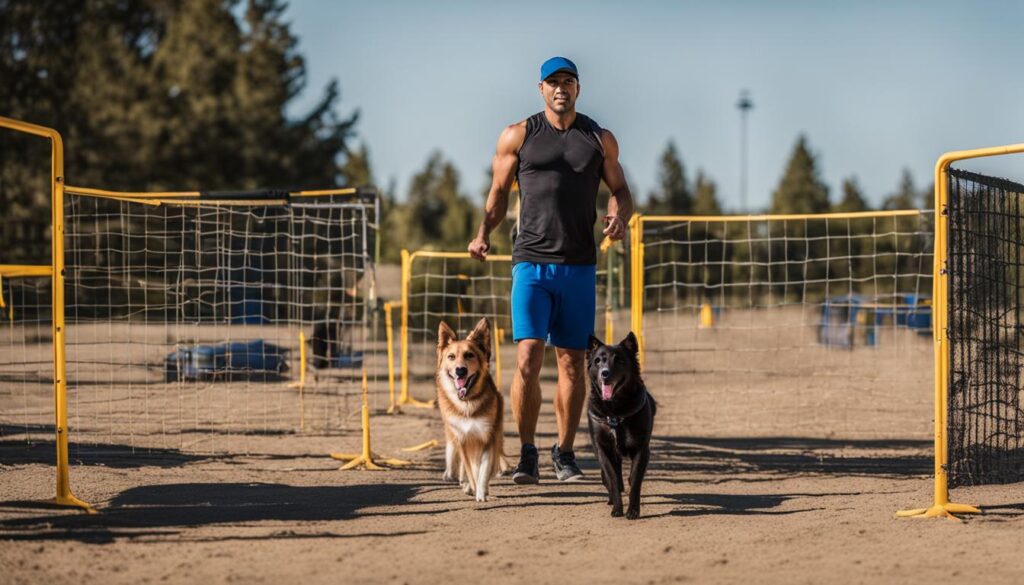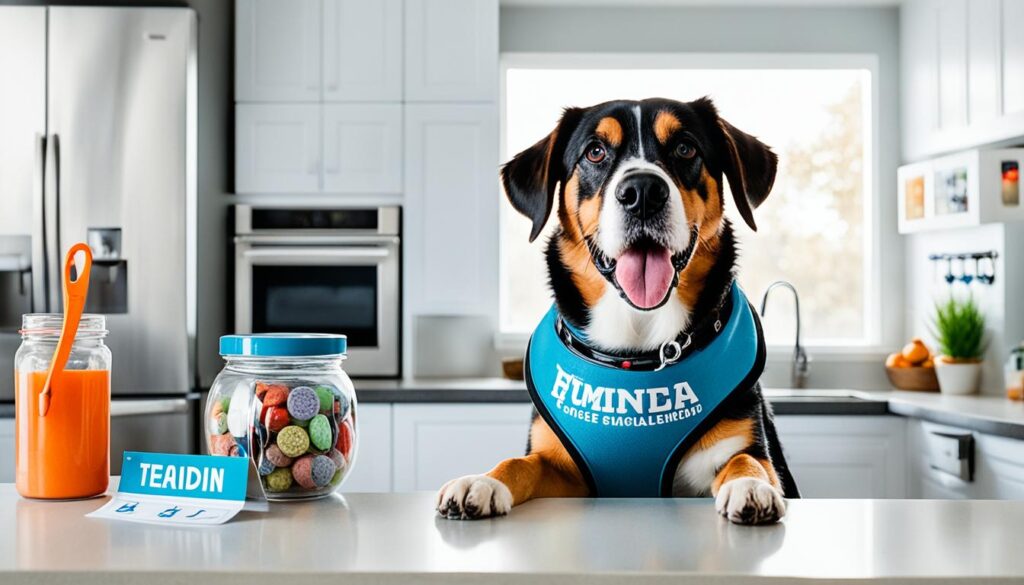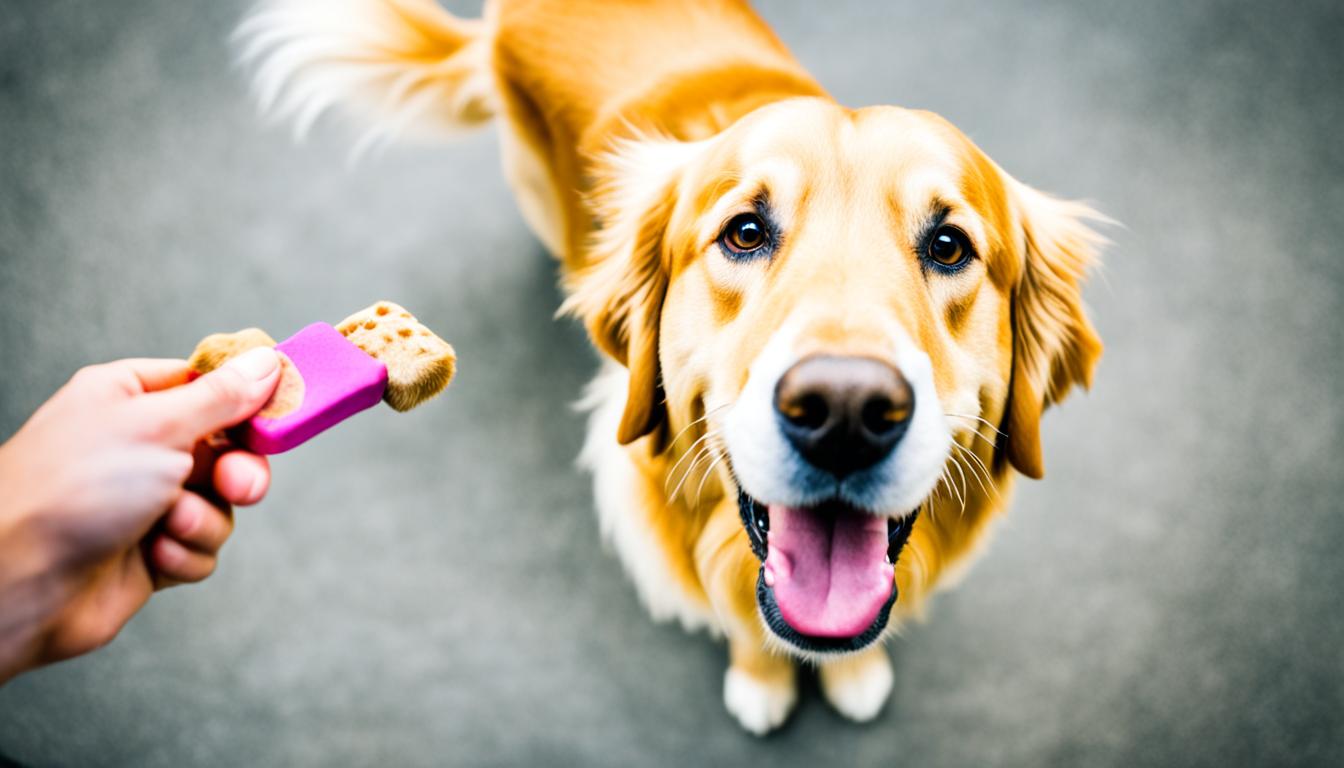Hello, fellow pet lovers! As a pet owner myself, I understand the joys and challenges that come with nurturing our furry friends. One of the most rewarding aspects of pet ownership is witnessing their growth and development, especially when it comes to their behavior and obedience. That’s why I’m excited to share with you some valuable insights and effective strategies for achieving long-term success in pet training.
Pet training is not just about teaching your pets to obey commands; it is a journey of understanding, communication, and strengthening the bond between you and your furry companion. Whether you’re a new pet owner or have been on this journey for a while, implementing the right training strategies can make a world of difference in shaping your pet’s behavior and ensuring a harmonious living environment.
By investing time and effort in training your pet, you can significantly improve their obedience and promote positive behaviors. From basic commands to advanced tricks, training provides mental stimulation, boosts confidence, and enhances the overall well-being of your pet. It is a valuable investment that yields lifelong benefits for both you and your furry friend.
Throughout this article, I will guide you through various training techniques and approaches that have proven to be successful in achieving long-term results. We’ll explore the philosophy of positive reinforcement training, delve into comprehensive training guides, break down basic commands, and tackle common challenges that may arise along the way. By the end, you’ll be equipped with the knowledge and tools to embark on a successful pet training journey.
So, let’s get started and unlock the secrets to mastering pet training for long-term success!
Key Takeaways:
- Implementing effective training strategies is crucial for long-term success in pet training.
- Training promotes obedience, positive behavior, and strengthens the bond between you and your pet.
- Positive reinforcement training is a philosophy that can shape desired pet behavior.
- Comprehensive training guides provide valuable insights for achieving training goals.
- Breaking down basic commands and overcoming challenges are essential steps in pet training.
The Philosophy of Positive Reinforcement Training
Positive reinforcement training is a highly effective approach to shaping pet behavior. This philosophy revolves around rewarding desired behaviors to encourage their repetition, rather than using punishment or aversive methods. By focusing on rewards and positive experiences, we create a joyful training environment that strengthens the bond between humans and their furry companions.
The Basics of Positive Reinforcement
Positive reinforcement relies on the principle that behavior that is rewarded is more likely to be repeated. When our pets exhibit desired behaviors, we use rewards to reinforce those behaviors. Rewards can include treats, toys, playtime, and verbal praise. The key is to find what motivates our pets and use it consistently to encourage them.
For example, when teaching a dog to sit, we can use a treat as a reward. When the dog sits on command, we immediately provide the treat and offer verbal praise such as “Good job!” This reinforces the association between sitting and receiving rewards, making the behavior more likely to occur again.
Celebrating Every Small Victory
In positive reinforcement training, celebrating every small victory is crucial. By recognizing and praising our pets for their efforts, we encourage them to continue learning and improving. Each small step towards the desired behavior is a success and should be acknowledged.
Additionally, celebrating small victories helps to build confidence and trust between pet and owner. When our pets feel valued and appreciated for their progress, they become more engaged and eager to participate in training sessions.
Merging Treats and Praise Effectively
When using rewards in positive reinforcement training, it’s important to merge treats and praise effectively. Treats serve as a tangible reward that quickly reinforces good behavior, while praise reinforces the emotional connection between pet and owner.
By combining treats and praise, we create a balanced approach that motivates our pets and strengthens the bond we share. For example, after successfully performing a new trick, we can provide a treat along with enthusiastic verbal praise and petting. This combination reinforces the positive behavior and communicates our appreciation to our pets.
Remember, positive reinforcement training is all about creating a positive and rewarding experience for both pets and owners. By utilizing effective training techniques and incorporating rewards-based training, we can shape our pets’ behavior in a gentle and loving manner.
Training Your Pet for Success: A Comprehensive Guide
When it comes to pet training, having a comprehensive guide is essential for achieving success. In this section, we will explore various aspects of training your pet and provide valuable insights and tips to help you along the way. From setting training goals to establishing a training routine, we will cover all the necessary steps to ensure a successful training journey for you and your pet.
To start off, it is crucial to set clear training goals. Think about what behaviors or commands you want your pet to learn and focus on those specific areas. By having well-defined goals, you can track your progress and stay motivated throughout the training process.

Next, establishing a training routine is key to consistent and effective training. Pets thrive on routine, so incorporating regular training sessions into their daily lives will help them better understand and respond to training cues. Consistency is vital in reinforcing desired behaviors and achieving long-term success.
When it comes to successful pet training, patience and positive reinforcement are crucial. Positive reinforcement involves rewarding your pet for exhibiting desired behaviors. This can be done through treats, praise, or a combination of both. By rewarding your pet for their good behavior, you are reinforcing positive habits and strengthening the bond between you and your furry friend.
Remember, training your pet requires time and effort. It’s important to approach training with a positive mindset and celebrate even the smallest accomplishments along the way.
In addition to setting goals, establishing a routine, and using positive reinforcement, it’s important to incorporate various training techniques and methods to keep your pet engaged and motivated. Each pet is unique, so it’s essential to find training techniques that work best for your furry companion.
A comprehensive pet training guide would not be complete without a discussion on the importance of consistency. Consistency is key in pet training, as it helps your pet understand and respond consistently to different training cues. Whether you’re training at home or in different environments, using consistent commands and expectations will ensure that your pet grasps the intended behaviors and obeys your commands.
By following the tips and techniques outlined in this comprehensive guide, you will be well-equipped to embark on a successful pet training journey. Remember, training your pet takes time, patience, and dedication, but the rewards are well worth the effort. Stay consistent, be patient, and never underestimate the power of positive reinforcement in shaping your pet’s behavior and building a strong bond.
Breaking Down Basic Commands for Your Dog
Starting with ‘Sit’ and ‘Stay’
Teaching your dog basic commands is an essential part of their training journey. Two fundamental commands to start with are ‘sit’ and ‘stay’. These commands provide the foundation for obedience and discipline, ensuring a well-behaved and well-adjusted dog.
To teach your dog to ‘sit’, follow these steps:
- Hold a treat close to your dog’s nose, moving your hand up.
- As your dog’s head follows the treat, their bottom will naturally lower into a sitting position.
- Once your dog is in a sitting position, say the command “sit” and immediately give them the treat as a reward.
- Repeat this process regularly, gradually reducing the use of treats and relying more on praise and positive reinforcement.
Once your dog has mastered ‘sit’, you can move on to teaching them to ‘stay’. This command teaches your dog to remain in a specific position without moving until given a release command.
To teach your dog to ‘stay’, follow these steps:
- Start with your dog in a sitting position.
- Hold your hand up, palm facing towards your dog, and say the command “stay” in a firm but calm voice.
- Take a step back, maintaining eye contact with your dog.
- If your dog remains in the ‘stay’ position, reward them with praise and a treat.
- Gradually increase the distance and duration of the ‘stay’ command, always rewarding your dog for successfully following the command.
Progressing to ‘Come’, ‘Heel’, and Beyond
Once your dog has mastered the ‘sit’ and ‘stay’ commands, you can progress to more advanced commands such as ‘come’ and ‘heel’.
To teach your dog to ‘come’, follow these steps:
- Choose a quiet and secure area for training.
- Put your dog on a leash and let them explore a short distance away from you.
- Get their attention by calling their name and using an enthusiastic tone.
- When your dog starts moving towards you, give the command “come”.
- When your dog reaches you, reward them with praise, treats, and affection.
‘Heel’ is another important command that teaches your dog to walk calmly and closely beside you without pulling on the leash.
To teach your dog to ‘heel’, follow these steps:
- Start with your dog on a leash and standing beside you.
- Hold a treat in your hand, close to your dog’s nose, and begin walking.
- As you walk, say the command “heel” and keep the treat close to your leg.
- If your dog walks beside you without pulling, reward them with praise and the treat.
- Consistently reinforce the ‘heel’ command during walks, gradually reducing the use of treats.
Remember, patience, consistency, and positive reinforcement are key when teaching your dog basic commands. With practice and dedication, your dog will become a well-behaved and obedient companion.
Consistency: The Keystone of Pet Training
In order to achieve successful pet training, consistency is paramount. By providing clear and consistent commands, pet owners can ensure that their furry companions understand and respond appropriately in various environments. Consistency not only reinforces desired behaviors but also helps pets understand the rules and expectations set by their owners.
Uniform Commands Across Different Environments
When training pets, it is essential to use uniform commands across different environments. Whether at home, in the park, or at a friend’s house, using consistent verbal cues and hand signals will help pets recognize and respond to commands regardless of the setting. This reinforces their understanding of the expected behaviors and prevents confusion or misinterpretation.
For instance, if you use the command “sit” at home but switch to “park yourself” when in a different environment, it can confuse your pet and hinder their ability to follow commands consistently. By using the same command consistently, such as “sit” in both environments, you establish a clear association that helps your pet understand and respond properly no matter where they are.
Enforcing House Rules Without Confusion
Consistency in training also applies to enforcing house rules. Establishing clear rules and boundaries helps pets understand what is expected of them and promotes a positive and harmonious living environment. It is important to consistently uphold these rules and apply them consistently across all family members.
For example, if jumping on the furniture is not allowed, all family members should enforce this rule consistently. If one family member allows the pet on the couch while another prohibits it, it can confuse the pet and lead to inconsistent behavior. By consistently enforcing house rules, you establish a clear structure that helps pets understand and adapt to their boundaries, creating a peaceful and well-behaved home environment.

Molding Desired Behaviors with Strategic Timing
In pet training, shaping desired behaviors is an essential aspect of achieving long-term success and obedience. One effective technique to shape behavior is through strategic timing. By understanding the significance of timing, pet owners can reinforce positive behaviors and eliminate unwanted ones.
Timing plays a crucial role in pet training as it helps create clear associations between actions and consequences. When a desired behavior is observed, reinforcing it immediately with praise, treats, or toys helps the pet understand that their action is desirable. Similarly, by addressing unwanted behaviors promptly and consistently, pets learn to associate their actions with negative outcomes.
When it comes to shaping behavior, there are several techniques that pet owners can employ:
- Marking the behavior: Using a specific sound or signal, such as a clicker or a verbal cue, to indicate to the pet that they have performed the desired behavior.
- Targeting specific moments: Identifying critical moments when the pet is most receptive to learning and shaping behaviors during these periods. For example, rewarding a dog for sitting calmly before heading out for a walk.
- Progressive reinforcement: Gradually increasing the criteria for reward as the pet becomes more proficient in the desired behavior. This technique encourages continuous improvement and ensures the behavior is well-established.
By utilizing these behavior shaping techniques with strategic timing, pet owners can effectively mold their pet’s behaviors. Training sessions become more efficient and productive, resulting in positive outcomes and a stronger bond between the pet and owner.
“Strategic timing is the secret ingredient in shaping your pet’s behavior. By reinforcing positive behaviors and addressing unwanted ones promptly, you can create a well-behaved and obedient pet.”
A visual demonstration of strategic timing in pet training is illustrated below:
Developing a Reward System: Identifying Optimal Incentives
In pet training, a reward system is essential for motivating and reinforcing desired behaviors. By identifying the incentives that resonate most with your pet, you can create a tailored approach that maximizes their enthusiasm and engagement during training sessions. Discovering what motivates your pet most is the key to effective training.
Discovering What Motivates Your Pet Most
Every pet is unique, and their motivations can vary. To identify optimal incentives for your pet, consider the following factors:
- Food Preferences: Some pets are food-driven and respond best to treats. Experiment with different flavors and textures to find what they find most enticing.
- Play Preferences: Other pets may be highly motivated by playtime. Find their favorite toys or engage in interactive activities that they enjoy as a reward for their efforts.
- Affection: Many pets thrive on attention and physical affection. Incorporate praise, petting, and cuddles into your reward system to reinforce positive behaviors.
By understanding your pet’s preferences, you can create a reward system that taps into their natural motivations, enhancing their eagerness to participate and succeed in training.
Crafting and Using Homemade Treats
Homemade pet treats can be a fantastic addition to your reward system. Not only do they provide motivation, but they also allow you to ensure the quality of ingredients and cater to any specific dietary requirements your pet may have.
Crafting homemade treats is easier than you might think. Simple recipes using pet-friendly ingredients like pumpkin, peanut butter, or chicken can be found online or in pet recipe books. By making your own treats, you can control the ingredients and avoid any additives or allergens that may affect your pet’s health.
When using homemade treats during training, remember to keep the treats small and easy to consume. This helps prevent overeating and ensures the training session remains focused and productive. Use treats strategically to reinforce positive behaviors and gradually reduce their frequency as your pet becomes more proficient in their training.
With homemade treats in your reward system, you not only have a powerful motivator but also the satisfaction of knowing you are providing your pet with healthy, delicious rewards for their hard work.
| Treat Recipe | Ingredients | Instructions |
|---|---|---|
| Peanut Butter Dog Biscuits | 1 cup whole wheat flour 1/2 cup creamy peanut butter 1/4 cup unsweetened applesauce 1/4 cup water |
|
Using these homemade peanut butter dog biscuits as a training treat can be a healthy and delicious option for your pet. Remember to consult with your veterinarian to ensure that the ingredients are suitable for your pet’s specific dietary needs.
Overcoming Common Training Challenges and Roadblocks
In the process of training your pet, you may encounter various challenges and roadblocks that hinder their progress. These obstacles can be frustrating, but with the right strategies and guidance, you can overcome them and continue your pet’s training journey towards success.
Adjusting Techniques for Timid or Reactive Dogs
Some dogs may be naturally timid or reactive, making training a bit more challenging. It’s important to adjust your techniques to meet their specific needs and build their confidence during training sessions.
One approach is to start with small steps and gradually expose your dog to new environments or stimuli. This gradual exposure allows them to become more comfortable and less reactive over time.
Using positive reinforcement techniques, such as providing treats and praise for desired behaviors, can also help increase their confidence and motivation to learn. Remember to be patient and understanding, allowing your dog to progress at their own pace.
Collaborating with a professional dog trainer who specializes in working with timid or reactive dogs can also provide valuable insights and techniques to address specific training challenges.
Knowing When to Seek Professional Help
In some cases, training challenges may be more complex or beyond your expertise. Recognizing when to seek professional help is crucial for the well-being and progress of your pet.
If you’ve tried various training strategies without success, or if your pet’s behavior poses a risk to themselves or others, it’s advisable to consult with a professional dog trainer or a certified animal behaviorist.
Professional trainers can assess your pet’s unique needs and develop a tailored training plan to address specific challenges. They have the knowledge and experience to implement effective behavior modification techniques and guide you through the training process.
Seeking professional help not only ensures the safety and well-being of your pet but also provides you with the support and guidance needed to overcome training roadblocks and achieve long-term success.

With the right techniques and support, you can overcome common training challenges and roadblocks that may arise during your pet’s training journey. By adjusting your techniques for timid or reactive dogs and knowing when to seek professional help, you can ensure that your pet receives the proper training and guidance they need to thrive.
Integrating Training into Your Pet’s Daily Routine
To ensure the effectiveness of pet training, it is essential to integrate it into your furry friend’s daily routine. By incorporating training sessions into everyday activities, you can establish consistent habits that will foster learning and behavior modification. This section will explore the benefits of incorporating training into your pet’s daily life and provide practical tips for creating a structured training routine.
Consistency is the key to successful training. By including training sessions as part of your pet’s daily routine, you provide regular opportunities for learning and reinforcement. Consistency helps reinforce desired behaviors and strengthens the bond between you and your pet. When training becomes a part of your pet’s daily life, they begin to associate certain activities and cues with learning, making it easier for them to understand and respond to commands.
“Incorporating training into your pet’s daily routine is a powerful way to create consistent learning opportunities and reinforce desired behaviors.”
One effective strategy is to incorporate training during everyday activities such as mealtime or walks. For example, you can ask your dog to sit and stay before placing their food bowl down or practice loose leash walking during your evening stroll. By integrating training into these activities, you make it a natural part of their routine, enhancing their learning and engagement.
Another tip is to establish designated training times throughout the day. Set aside specific periods for focused training sessions where you can work on specific commands or behavior goals. These sessions can be as short as a few minutes or longer depending on your pet’s attention span. Remember to keep the training sessions fun and rewarding, using treats, praise, and play to motivate your pet and keep them engaged.
Along with incorporating training into daily activities, it is crucial to establish a consistent training environment. This helps your pet associate certain cues and commands with specific settings. Gradually introduce distractions and variations to their training environment to ensure they can respond reliably in different situations.
By integrating training into your pet’s daily routine, you create a structured and consistent learning experience. This promotes better retention of commands and behaviors, ultimately leading to a well-trained and obedient pet. Remember to be patient, celebrate small victories, and adapt your training methods to suit your pet’s individual needs.

| Benefits of Integrating Training into Daily Routine |
|---|
| 1. Consistent learning opportunities |
| 2. Reinforcement of desired behaviors |
| 3. Strengthened bond between pet and owner |
| 4. Natural association of training cues with daily activities |
| 5. Enhanced engagement and learning retention |
Why Training Should Be Fun: Keeping Your Pet Engaged and Happy
Incorporating play into training sessions is an essential aspect of fun and engaging pet training. By making training sessions enjoyable for your pet, you can create a positive learning environment and ensure their active participation. Play not only adds excitement to the training process but also strengthens the bond between you and your furry friend.
Incorporating Play into Training Sessions
During training, incorporating play can make learning more enjoyable and rewarding for your pet. Playful activities such as hide-and-seek or interactive games can be seamlessly integrated into training sessions. By associating training with play, you create a positive reinforcement mechanism that encourages your pet’s active engagement and stimulates their natural curiosity.
Engaging your pet in interactive play during training sessions can increase their motivation to learn and respond to commands. Incorporate play breaks between training exercises to keep the energy levels high and make the entire experience fun-filled for your pet.
The Role of Toys and Games in Learning
Toys and games play a crucial role in enhancing the training experience for pets. Offering toys as rewards for accomplishing training tasks can provide additional motivation and make the learning process more enjoyable. Interactive toys, such as puzzle toys or treat-dispensing toys, can mentally stimulate your pet while reinforcing positive behaviors.
When choosing toys for training sessions, opt for those that are safe, durable, and suitable for your pet’s size and breed. Different toys can be used to train specific behaviors or commands, ensuring a diverse and engaging training experience.
Remember, play and toys should complement the training process and not distract from it. Use them strategically to reinforce desired behaviors and maintain your pet’s focus during training sessions.
Conclusion
In conclusion, the process of pet training is not merely about teaching commands and correcting behaviors. It is about building trust and cultivating a lifelong journey of learning and bonding between you and your pet. Throughout this article, we have explored various strategies and techniques that contribute to the overall success of pet training.
By implementing positive reinforcement methods, celebrating small victories, and understanding the importance of consistency, you can foster a positive training experience for your pet. The use of appropriate timing and an effective reward system can further motivate and shape desired behaviors, while overcoming challenges may require adjustments in techniques or seeking professional help.
Integrating training routines into your pet’s daily life and making training sessions fun and engaging not only enhances the learning process but also strengthens the trust and joy between you and your pet. Remember, pet training is a continuous journey, as both you and your pet will continue to learn and grow together, deepening the bond you share.
FAQ
What are the benefits of pet training?
Pet training has numerous benefits, including improved obedience, behavior modification, and better communication between you and your pet. Training also helps establish a bond of trust and strengthens the relationship between you and your pet.
What is positive reinforcement training?
Positive reinforcement training is a training technique that focuses on rewarding desired behaviors rather than punishing unwanted behaviors. It involves using rewards, treats, and praise to motivate and reinforce positive behavior in pets. This approach has been proven to be effective in shaping desired behaviors and improving pet’s overall behavior and obedience.
How can I effectively merge treats and praise in pet training?
To effectively merge treats and praise in pet training, you should reward your pet with a treat immediately after they exhibit the desired behavior. Simultaneously, use verbal praise or enthusiasm to reinforce the positive behavior. This combination helps your pet associate the treat with the desired behavior and ensure they understand that they are doing something right.
How can I set training goals for my pet?
Start by identifying the specific behaviors or commands you want your pet to learn or improve upon. Then break down these goals into smaller, manageable steps. Create a training plan and timeline to gradually work towards achieving these goals. It’s important to be patient and consistent throughout the training process.
How can I teach my dog basic commands?
Teaching your dog basic commands like ‘sit’ and ‘stay’ can be done using positive reinforcement techniques. Start by using a treat to lure your dog into the desired position, and then reward them with the treat. With consistent repetition and practice, your dog will start associating the command with the action and eventually perform it without the need for a treat or lure.
Why is consistency important in pet training?
Consistency is crucial in pet training as it helps establish clear expectations and promotes faster learning. Pets thrive on routine and consistency, so using the same commands, cues, and training methods across different environments helps reinforce their understanding and response to your instructions.
How can I overcome common training challenges with my pet?
Overcoming training challenges with your pet requires patience, understanding, and adaptability. For timid or reactive dogs, it’s important to adjust your training techniques to build their trust and confidence gradually. If you are facing more complex training issues, seeking professional help from a certified pet trainer can provide you with the necessary guidance and expertise.
How can I integrate training into my pet’s daily routine?
Integrating training into your pet’s daily routine is essential for consistent progress and reinforcement. Incorporate short, focused training sessions into your pet’s daily activities, such as before meal times or walks. This helps make training a regular part of their routine and enhances their overall learning and retention.
How can I make training sessions fun and engaging for my pet?
Making training sessions fun and engaging for your pet is important to keep them motivated and eager to learn. Incorporate play and interactive activities into your training sessions, such as using toys or playing games. This not only makes training enjoyable for your pet but also enhances their learning experience and strengthens the bond between you.
How can training help build trust and joy in my relationship with my pet?
Training provides an opportunity for you to build trust and joyful experiences with your pet. By using positive reinforcement methods, you are creating a positive and rewarding environment for your pet, fostering a trusting bond built on mutual understanding and communication. The training journey becomes a shared experience that strengthens the connection between you and your pet.
Source Links
- https://www.jazzswonderland.com/blog/mastering-dog-training-essential-tips-dos-and-donts-and-positive-reinforcement-techniques
- https://pawpalplace.com/blogs/news/comprehensive-dog-training-guide-for-beginners
- https://evergreenanimalhospital.com/2024/01/01/canine-commandments-mastering-training-in-january/

